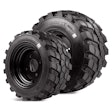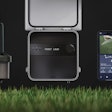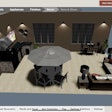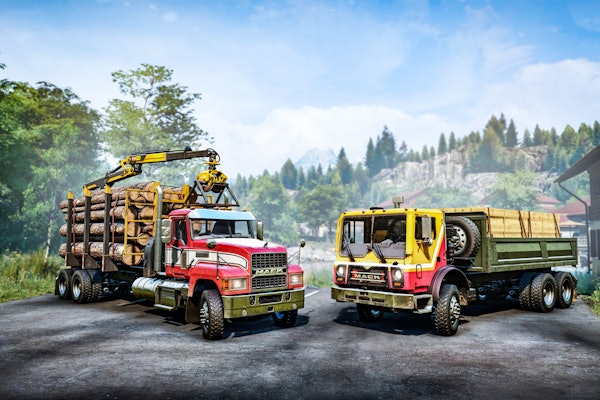Featured on this page is a classic John Deere Hayrake. Note the iron wheels. They were a step better than wooden wheels and persisted on farm equipment for decades after the rubber tire was the norm on the automobile. It was really in the 1950″s when iron gave way to rubber on equipment like this. The rubber had an advantage only when it came time to transport the machine. In use the steel worked very well for the wheels.
This is called a side delivery rake, because it leaves a wind row of hay to the left and beside the rake. Before the days of the pickup baler, a trip rake was often used. The trip rake consisted of a series of teeth the combed along the ground much as a garden rake does, and when it was full, it would trip lifting the teeth and dumping the hay. The side delivery rake uses a series of rotating bars with teeth to kick the hay to the side until it finally clears the left side of the rake. Unlike the trip rake which compresses the hay, the side delivery rake tends to fluff the hay up some as well making it easier to get the hay dry. The rotating cylinder with the tooth bars are ground driven meaning that they capture power from one (or both) of the front wheels. This assures that the rake is always coordinated with the ground speed. It is also a throw back to another era. The basic design of the rake you see here has its origins as a horse drawn machine. It has the large wheels in front, and castor wheels in the back and with only a change of tongue this type of rake works well pulled by a team of horses. Indeed this design was used with a two horse team long before tractors were common. Most tractor designs put the mail wheels in the back and set the front of the rake on the tractor drawbar or mount the rake on a 3 point hitch and drive it with the tractor PTO.
Notwithstanding the age of this design It has remained popular for a very long time. It works well nearly everywhere except in hilly country. On a side hill, the rake tends to swing downhill due to the configuration and then you have problems. The back of the rake is supported by castor wheels so all the weight of the rake behind the front wheels is available to “pry” the rake sideways.











